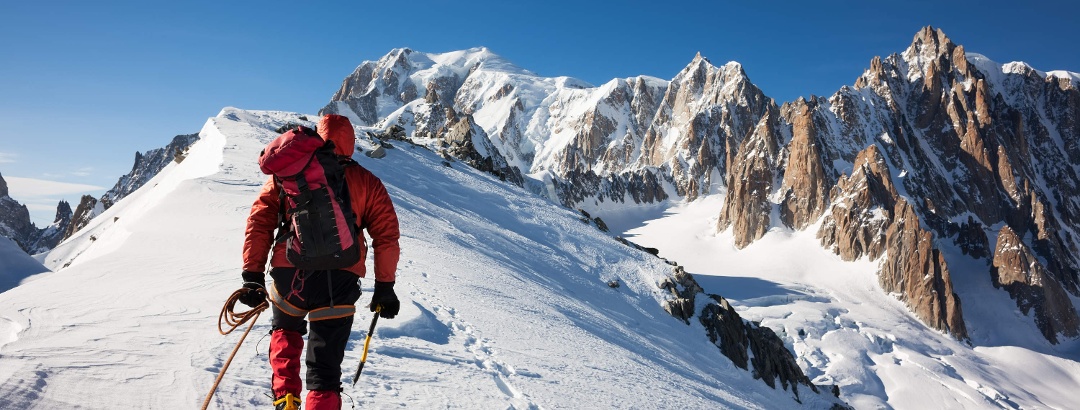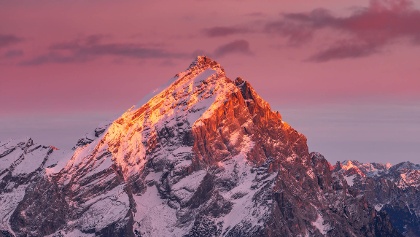Alpine Route
High up on the mountain, usually in the early morning hours, the adventure of high altitude touring begins. Often roped up, you'll walk across crevasse-ridden glaciers, hear the snow crunching under your shoes, and climb over ice and rocks as the air gets thinner and thinner. Experience, knowledge and trust in your group are therefore indispensable on a strenuous high-altitude tour. On Outdooractive you can find out what you need to bear in mind on your high-altitude tour.
The best regions
Experience glaciers on high altitude tours
Due to the altitude and the length of the ascent, high altitude tours usually last longer than one day – nights are usually spent in huts. There are also many alpine dangers, which is why this type of mountaineering is reserved for experienced alpinists. However, there are also easier high-altitude tours that are also possible for less experienced climbers if accompanied by a mountain guide.
In addition to guided alpine tours, special alpine touring courses are also offered. There you will learn how to walk on ice/snow with crampons, crevasse rescue techniques, first aid methods and orientation on glaciers.
Here's what you should keep in mind on your high tours
High altitude tours are strenuous, athletically demanding undertakings. Knowledge and experience of ice and snow conditions, weather conditions and the mountains are just as essential as surefootedness, a head for heights and experience in climbing on rock and ice.
Classic northwestern slopes, which are usually still completely covered by glaciers, also count as active high-altitude tours. Depending on the conditions, these tours can be done entirely in firn (rather in winter and early summer) or in winters with little snow or in summer they are completely covered with ice, so that every pitch has to be climbed in the ice. Depending on the tour and difficulty, good firn or ice is better. For such high-altitude tours, you can assign the tag „ice tour“ when creating the tour.
Basically, in classic north-west terrain, one moves in extremely steep and high alpine terrain (over 45 degrees slope). In addition to an exceptionally good physical condition, you also need intuitive and absolutely safe handling of the equipment needed in this terrain (ice tools, ice screws, crampons). Solid knowledge of avalanche awareness rounds off the requirements profile of a touring aspirant.
Difficulty scale
Due to the different influences and the changeable conditions on a high altitude tour, the determination of fixed difficulty scales is complicated. Several rating systems can be used, whereby it has proved important in the evaluation of high altitude tours to focus on the seriousness of the tour (tour length, continuity of requirements, objective danger, exposure, quality of protection, difficulty, etc.) and less on the technical difficulties of the climbing passages. The tours on outdooractive can therefore be rated according to the UIAA scale and the Western Alps scale.
Your high altitude tour with the features of Outdooractive
With the features of Outdooractive you can easily plan, track and navigate your alpine tours. Information on terrain, trail conditions and metres of altitude – with the interactive map from Outdooractive you get all the information you need for your outdoor adventure. With the BuddyBeacon, your location is shared in real time with family or friends. They can track where you are at any time. Outdooractive helps you arrive safely at your destination and makes your high-altitude tour a very special experience.
Offers and discounts from our partners
Benefit from exclusive offers from our partners
As a Pro and Pro+ member not only do you have access to additional features and the best maps at your disposal, but you can also benefit from exclusive offers from our partners, ensuring you are always fully equipped for the outdoors!
Explore all benefits and discounts
